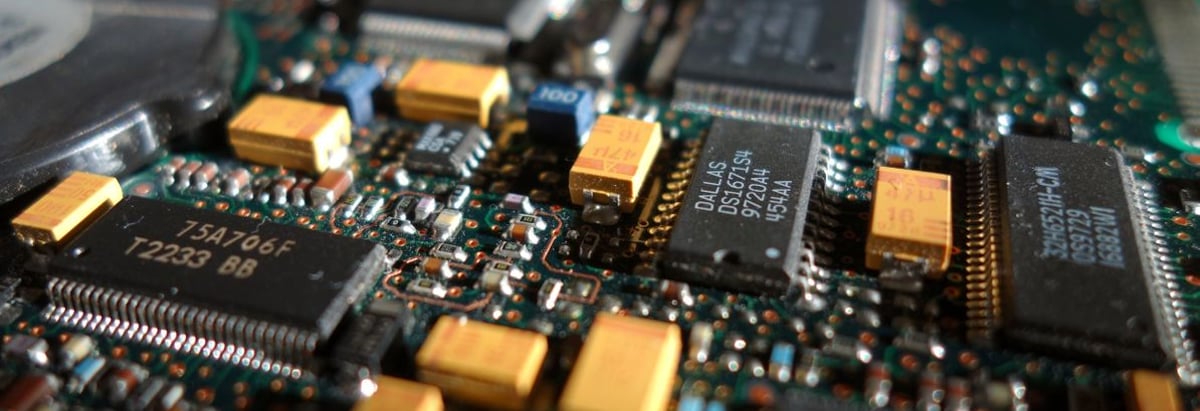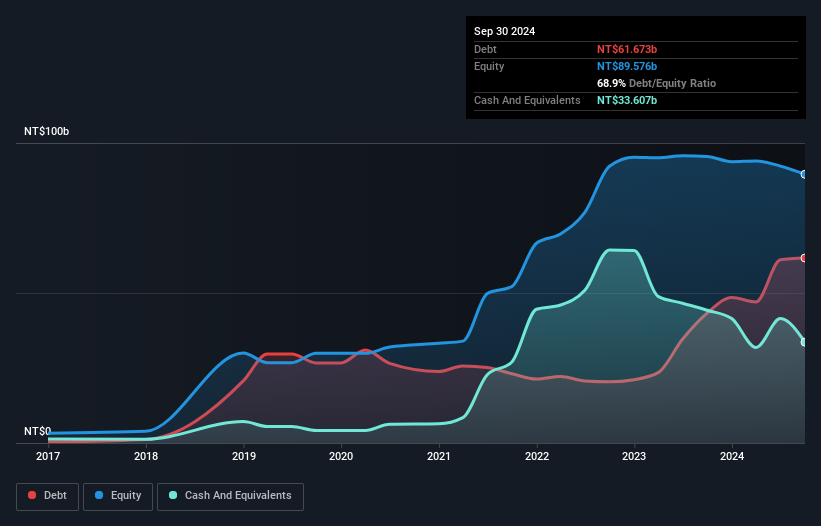- Taiwan
- /
- Semiconductors
- /
- TWSE:6770
Is Powerchip Semiconductor Manufacturing (TWSE:6770) Using Debt Sensibly?

Some say volatility, rather than debt, is the best way to think about risk as an investor, but Warren Buffett famously said that 'Volatility is far from synonymous with risk.' So it might be obvious that you need to consider debt, when you think about how risky any given stock is, because too much debt can sink a company. As with many other companies Powerchip Semiconductor Manufacturing Corp. (TWSE:6770) makes use of debt. But should shareholders be worried about its use of debt?
Why Does Debt Bring Risk?
Generally speaking, debt only becomes a real problem when a company can't easily pay it off, either by raising capital or with its own cash flow. Part and parcel of capitalism is the process of 'creative destruction' where failed businesses are mercilessly liquidated by their bankers. However, a more usual (but still expensive) situation is where a company must dilute shareholders at a cheap share price simply to get debt under control. By replacing dilution, though, debt can be an extremely good tool for businesses that need capital to invest in growth at high rates of return. When we think about a company's use of debt, we first look at cash and debt together.
Check out our latest analysis for Powerchip Semiconductor Manufacturing
What Is Powerchip Semiconductor Manufacturing's Net Debt?
You can click the graphic below for the historical numbers, but it shows that as of September 2024 Powerchip Semiconductor Manufacturing had NT$61.7b of debt, an increase on NT$43.3b, over one year. However, because it has a cash reserve of NT$33.6b, its net debt is less, at about NT$28.1b.

How Strong Is Powerchip Semiconductor Manufacturing's Balance Sheet?
Zooming in on the latest balance sheet data, we can see that Powerchip Semiconductor Manufacturing had liabilities of NT$30.2b due within 12 months and liabilities of NT$71.8b due beyond that. Offsetting this, it had NT$33.6b in cash and NT$7.41b in receivables that were due within 12 months. So its liabilities outweigh the sum of its cash and (near-term) receivables by NT$60.9b.
This is a mountain of leverage relative to its market capitalization of NT$66.0b. This suggests shareholders would be heavily diluted if the company needed to shore up its balance sheet in a hurry. When analysing debt levels, the balance sheet is the obvious place to start. But it is future earnings, more than anything, that will determine Powerchip Semiconductor Manufacturing's ability to maintain a healthy balance sheet going forward. So if you want to see what the professionals think, you might find this free report on analyst profit forecasts to be interesting.
Over 12 months, Powerchip Semiconductor Manufacturing made a loss at the EBIT level, and saw its revenue drop to NT$45b, which is a fall of 5.2%. That's not what we would hope to see.
Caveat Emptor
Over the last twelve months Powerchip Semiconductor Manufacturing produced an earnings before interest and tax (EBIT) loss. Indeed, it lost a very considerable NT$7.8b at the EBIT level. Considering that alongside the liabilities mentioned above does not give us much confidence that company should be using so much debt. So we think its balance sheet is a little strained, though not beyond repair. However, it doesn't help that it burned through NT$23b of cash over the last year. So in short it's a really risky stock. When analysing debt levels, the balance sheet is the obvious place to start. But ultimately, every company can contain risks that exist outside of the balance sheet. These risks can be hard to spot. Every company has them, and we've spotted 1 warning sign for Powerchip Semiconductor Manufacturing you should know about.
If, after all that, you're more interested in a fast growing company with a rock-solid balance sheet, then check out our list of net cash growth stocks without delay.
New: Manage All Your Stock Portfolios in One Place
We've created the ultimate portfolio companion for stock investors, and it's free.
• Connect an unlimited number of Portfolios and see your total in one currency
• Be alerted to new Warning Signs or Risks via email or mobile
• Track the Fair Value of your stocks
Have feedback on this article? Concerned about the content? Get in touch with us directly. Alternatively, email editorial-team (at) simplywallst.com.
This article by Simply Wall St is general in nature. We provide commentary based on historical data and analyst forecasts only using an unbiased methodology and our articles are not intended to be financial advice. It does not constitute a recommendation to buy or sell any stock, and does not take account of your objectives, or your financial situation. We aim to bring you long-term focused analysis driven by fundamental data. Note that our analysis may not factor in the latest price-sensitive company announcements or qualitative material. Simply Wall St has no position in any stocks mentioned.
About TWSE:6770
Powerchip Semiconductor Manufacturing
Powerchip Semiconductor Manufacturing Corporation provides chip design and manufacturing services.
Slightly overvalued with imperfect balance sheet.
Market Insights
Community Narratives





